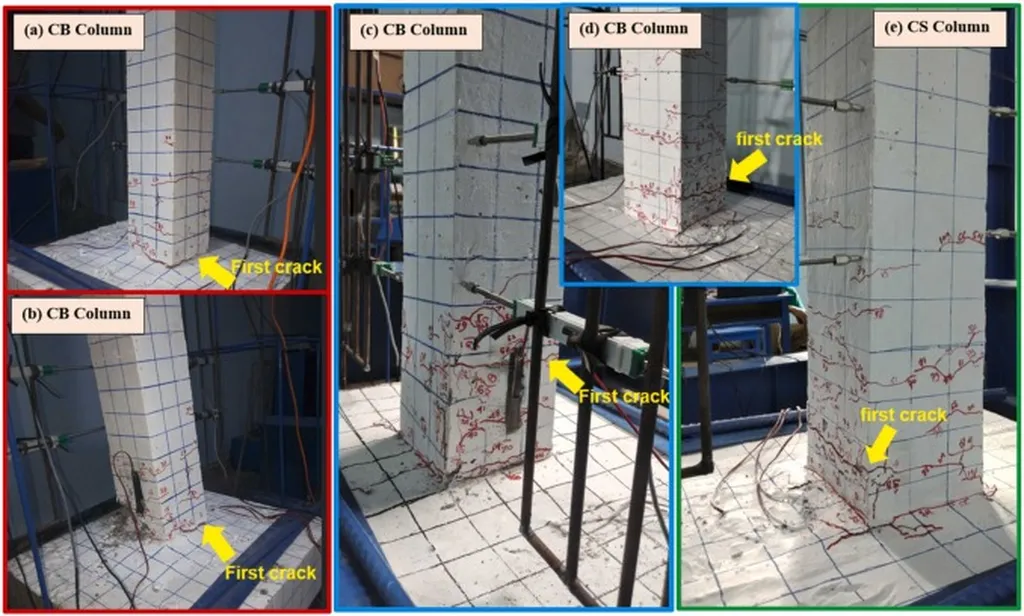In the quest for sustainable and cost-effective construction materials, researchers have turned to an unlikely ally: bamboo. A recent study published in the *Journal Innovation of Civil Engineering* (translated from Indonesian as *Journal of Civil Engineering Innovation*) explores the durability of bamboo-reinforced concrete columns under high temperatures, offering promising insights for the construction and energy sectors.
Erik Fadilah Kusuma Wardana, a researcher from Universitas Negeri Malang in Indonesia, led the study that delves into the potential of bamboo as a reinforcement material in concrete structures. “Bamboo’s relatively high tensile strength makes it an attractive alternative to traditional steel reinforcement,” Wardana explains. “However, its high cellulose content poses challenges in high-temperature scenarios, such as building fires.”
The research focused on two types of bamboo reinforcement: intact round bamboo with spiral steel stirrups and slatted bamboo with rectangular steel stirrups. Concrete specimens were exposed to temperatures of 800°C for one hour, simulating real-world fire conditions. The results were intriguing. The round bamboo column with spiral stirrups sustained a maximum axial load of 247.6 kN, while the slatted bamboo column with rectangular stirrups held 233.2 kN. Although these values were lower than pre-fire measurements, they still demonstrated significant structural viability.
“The findings suggest that bamboo-reinforced concrete columns can retain a considerable amount of their load-bearing capacity even after exposure to high temperatures,” Wardana notes. This resilience could have profound implications for the construction industry, particularly in regions prone to fires or where sustainable building practices are prioritized.
For the energy sector, the use of bamboo in construction could also contribute to reducing the carbon footprint of buildings. As the world shifts towards greener energy solutions, the adoption of eco-friendly materials like bamboo could play a crucial role in achieving sustainability goals. “This research opens up new possibilities for the use of bamboo in structural applications, especially in areas where traditional materials may be less accessible or more expensive,” Wardana adds.
The study’s findings highlight the need for further research into the long-term durability and performance of bamboo-reinforced concrete under various environmental conditions. As the construction industry continues to evolve, the integration of innovative materials like bamboo could pave the way for more sustainable and resilient infrastructure.
In the words of Wardana, “The future of construction lies in our ability to adapt and innovate, and bamboo reinforcement is a step in that direction.” With ongoing advancements in construction technology, the potential for bamboo to revolutionize the industry is immense, offering a glimpse into a more sustainable and resilient future.

